The Papua Blog
The Korowai tribe
The treehouse nomads of Papua: a brief introduction
Words and photos by Marc Weiglein
PEOPLE OF THE TREE HOUSE
The Korowai tribe is an indigenous group living in the isolated, forested regions of southwestern Papua. The Korowai are known for their unique culture and way of life, which includes their traditional tree houses, built high above the ground on wooden poles, or directly in treetops. There are several reasons why the Korowai prefer to live high above the ground: There are fewer mosquitoes up there and also fewer snakes. And the elevated position can offer protection if you are attacked by enemies. The main reason, however, are the ghosts that are said to roam the forest at night (more on ghosts later).
The Korowai build their tree houses from natural forest materials such as wood, bamboo and leaves of the sago palm. The process of building a Korowai tree house can take several weeks and the houses can last for several years if well maintained. A Korowai tree house is an amazing piece of architecture. It is built using only materials from the surrounding forest. No modern tools are used – no hammers, no measuring, no nails. And the tallest houses can reach a height of 40 metres (130ft). Compare that to New York’s Statue of Liberty, which is 46 metres (151ft) tall without its base.
It should be mentioned that not all tree houses are this high. The very tall houses are built by young men, often to show off. When the house is finished, there is a feast in honour of the builders and the men rise in prestige throughout the area. After that, however, the very high houses are hardly used any more. They are simply too impractical. For families and normal life, the Korowai build houses that are between 3 and 10 metres above the ground.
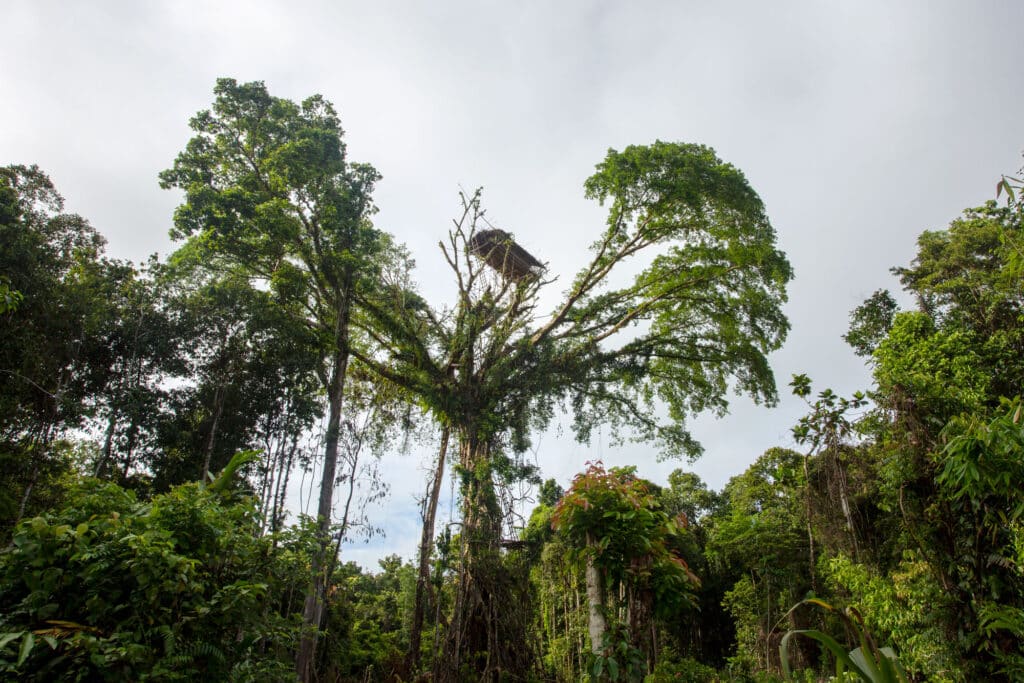
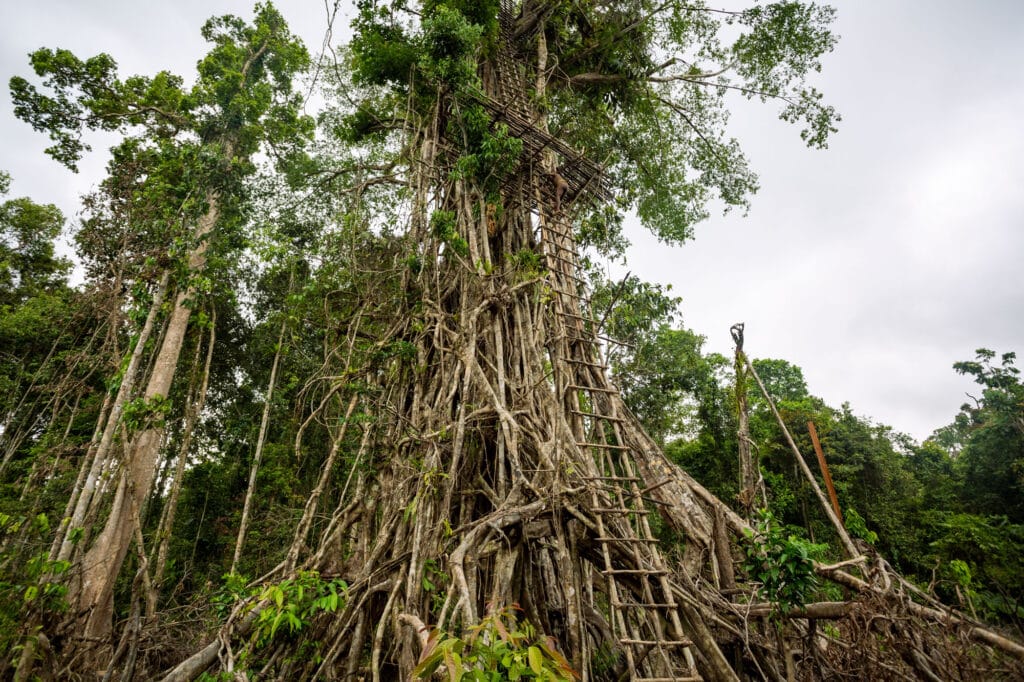
VERY ISOLATED AND HARD TO REACH
Because of their isolated way of life and hard-to-reach location, the Korowai first came into contact with the outside world in the late 1970s. This contact was initially very limited and therefore the Korowai can be said to have lived virtually untouched by the outside world until the 1990s.
Today, most of the indigenous Korowai live in villages along the two main rivers in the west and east of the Korowai territory. Life there remains very simple and the Korowai are largely self-sufficient. However, in the villages they do have access to a rudimentary supply of modern foods (mainly rice, sugar and coffee) and medicines. As a result, these villages are attractive and are drawing more and more Korowai out of the forest.
Therefore, if one wants to see traditionally living Korowai, one has to engage in trekking in the jungle for several days. In the huge forest area, individual Korowai families and clans still live in a relatively traditional way. That means mainly that they still live in their tree houses, feed mainly on sago and water, and have hardly any material goods. The most important possession is often a necklace made of dog teeth, a hunting bow or a domesticated wild boar.
A trip to the Korowai usually starts/ends in Jayapura and takes at least a week, of which you spend 3-4 days in the Korowai forest. The rest of the time is needed for the journey to and from one of the settlements, from which you then walk into the forest. Almost all tours visit the west sector. The eastern sector, on the other hand, is rarely visited, as travel is more time-consuming and costly. We are one of the few operators in the world to also offer tours into the eastern sectors of the forest (only for groups). Also we are one of the few operators that allows you to combine a tour to the Korowai with a tour to the Asmat.
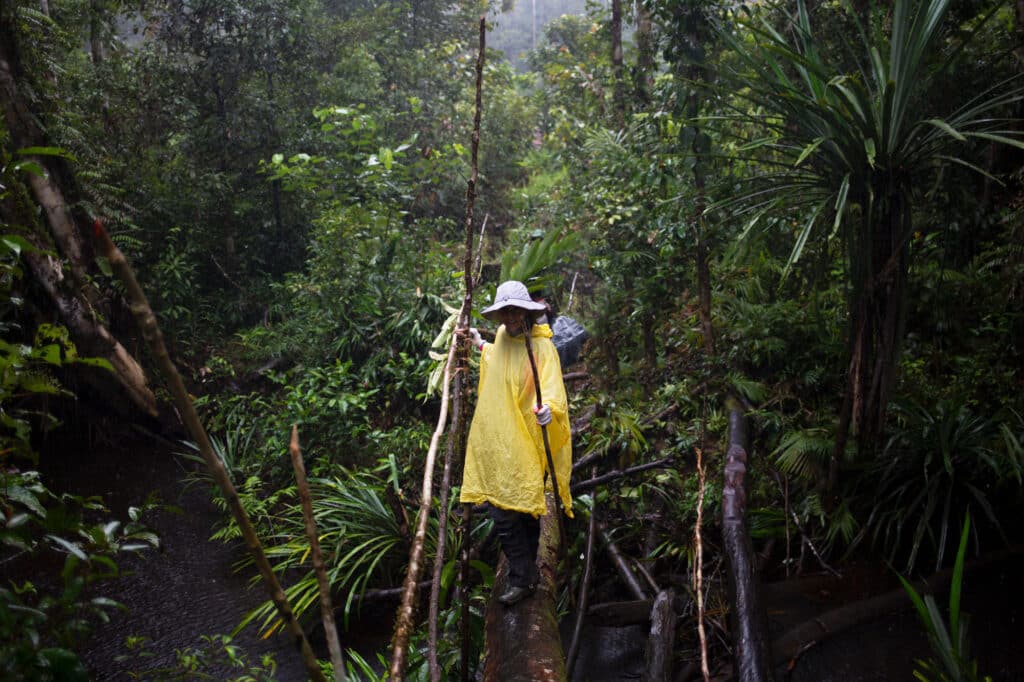
NOMADS WHO TEND TO BE PEACEFUL
Unlike their relatives in the villages, the traditional Korowai roam their forest as nomads. They move from sago area to sago area, usually settling in one place for around 5 years, until the sago stock there is depleted. These campsites and the associated sago stock are owned by one clan and may not be used by other clans. This has often led to disputes in the past. Despite this, the Korowai are generally considered peaceful and far less aggressive than, for example, the Asmat.
For this, the Korowai have a complex social and cultural system with a strict hierarchy based on age and gender. The tribe is led by a chief who is responsible for making important decisions and maintaining peace and harmony within the community. The Korowai also have a system of traditional laws and customs that govern their daily lives and interactions with other tribes.
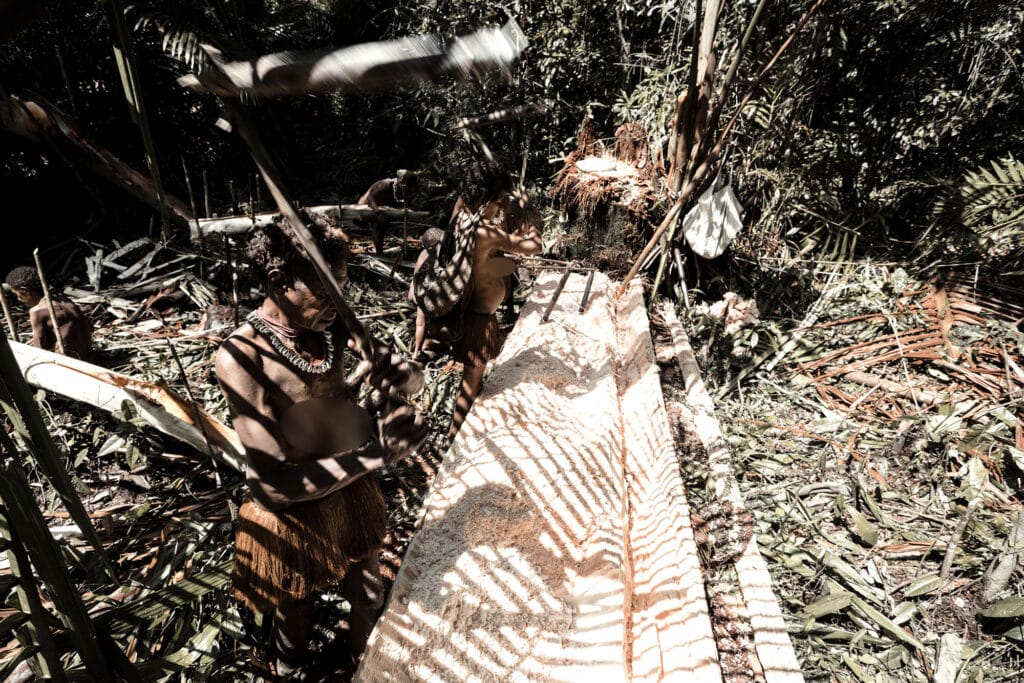
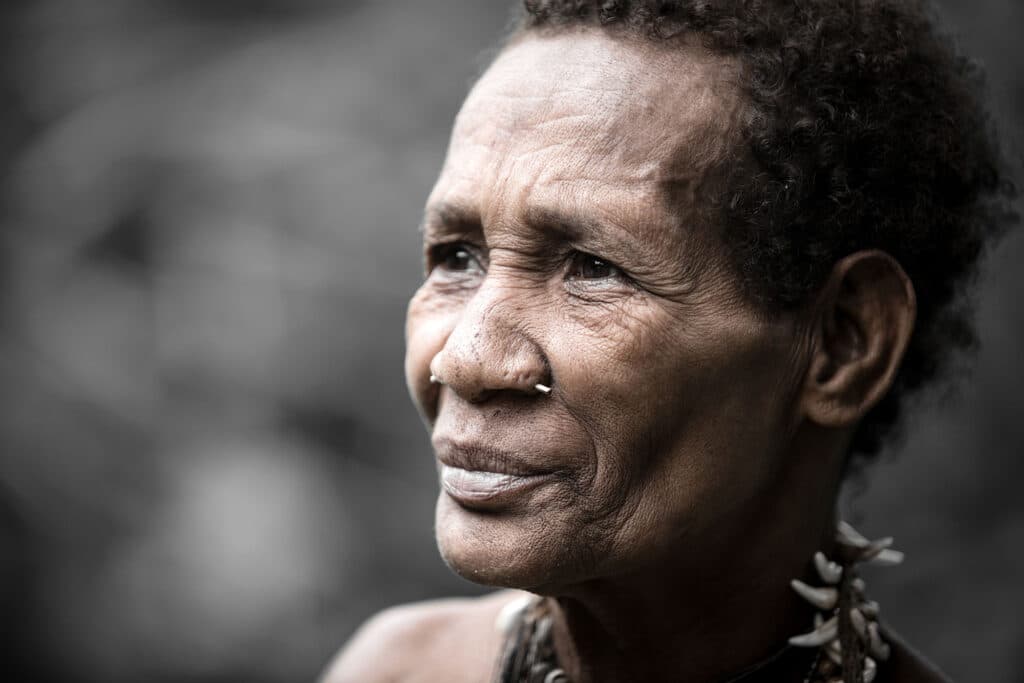
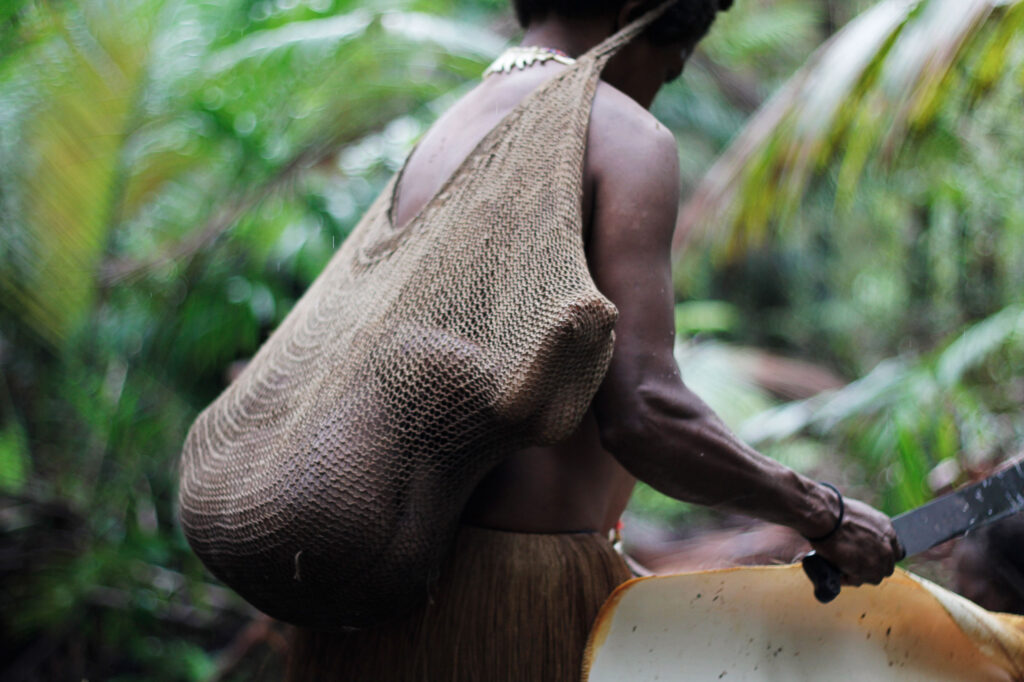
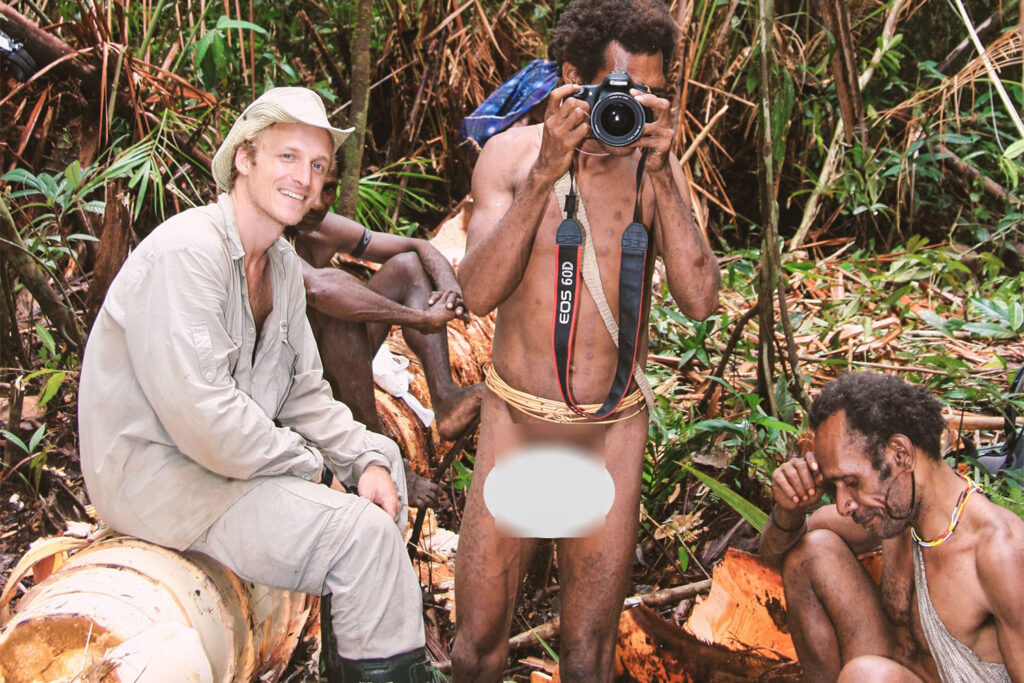
LET’S NOT FORGET THE GHOSTS
Another fascinating aspect of the Korowai culture is their belief in the existence of a type of evil spirits called “khakhua”. The Korowai believe that these spirits can take the form of a human and cause harm to the tribe. To protect themselves, the Korowai perform elaborate rituals and practices, which include the use of traditional medicine and magic. Illness or death can always be traced back to such a spirit, and often to a sorcerer who willfully caused the harm. And, of course, these ghosts live in the same forest. They have their own areas, which are considered taboo zones and must not be entered.
I could write a lot more about these great people, but the best thing is to visit them yourself.
Feel ready to visit them? We can bring you there.

